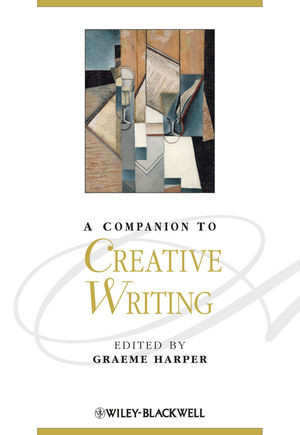A Companion To Creative Writing Graeme Harper Ed by Graeme Harper (ed.) 9780470656938, 9781118325759, 047065693X, 1118325753 instant download after payment.
A Companion to Creative Writing comprehensively considers key aspects of the practice, profession and culture of creative writing in the contemporary world.
- The most comprehensive collection specifically relating to the practices and cultural and professional place of creative writing
- Covers not only the “how” of creative writing, but many more topics in and around the profession and cultural practices surrounding creative writing
- Features contributions from international writers, editors, publishers, critics, translators, specialists in public art and more
- Covers the writing of poetry, fiction, new media, plays, films, radio works, and other literary genres and forms
- Explores creative writing’s engagement with culture, language, spirituality, politics, education, and heritage
Content:
Chapter 1 The Architecture of Story (pages 7–23): Lorraine M. Lopez
Chapter 2 Writing Creative Nonfiction (pages 24–39): Bronwyn T. Williams
Chapter 3 Writing Poetry (pages 40–55): Nigel McLoughlin
Chapter 4 Writing for Children and Young Adults (pages 56–70): Kathleen Ahrens
Chapter 5 Write on! Practical Strategies for Developing Playwriting (pages 71–85): Peter Billingham
Chapter 6 Writing for Sound/Radio (pages 86–97): Steve May
Chapter 7 Writing the Screenplay (pages 98–114): Craig Batty
Chapter 8 New Media Writing (pages 115–128): Carolyn Handler Miller
Chapter 9 How to Make a Pocket Watch: The British Ph.D. in Creative Writing (pages 129–143): Simon Holloway
Chapter 10 Creative Writing and the Other Arts (pages 144–159): Harriet Edwards and Julia Lockheart
Chapter 11 Agents, Publishers, and Booksellers: A Historical Perspective (pages 161–178): John Feather
Chapter 12 The Changing Role of the Editor: Editors Past, Present, and Future (pages 179–194): Frania Hall
Chapter 13 Translation as Creative Writing (pages 195–212): Manuela Perteghella
Chapter 14 Creative Writing and “the lash of criticism” (pages 213–228): Steven Earnshaw
Chapter 15 But What's Really at Stake for the Barbarian Warrior? Developing a Pedagogy for Paraliterature (pages 229–244): Jeffrey S. Chapman
Chapter 16 Creative Writing and Education (pages 245–262): Jeri Kroll
Chapter 17 The Rise and Rise of Writers' Festivals (pages 263–277): Cori Stewart
Chapter 18 Creative Writing Research (pages 278–290): Graeme Harper
Chapter 19 Literary Prizes and Awards (pages 291–303): Claire Squires
Chapter 20 D.H. Lawrence, Forever on the Move: Creative Writers and Place (pages 305–319): Louise DeSalvo
Chapter 21 The Psychology of Creative Writing (pages 320–333): Marie J. C. Forgeard, Scott Barry Kaufman and James C. Kaufman
Chapter 22 Creative Writing around the World (pages 334–347): Matthew McCool
Chapter 23 Creative Hauntings: Creative Writing and Literary Heritage at the British Library (pages 348–356): Jamie Andrews
Chapter 24 Politics (pages 357–376): Jon Cook
Chapter 25 Creative Writing and the Cold War University (pages 377–392): Eric Bennett
Chapter 26 “To the imagination, the sacred is self?evident”: Thoughts on Spirituality and the Vocation of Creative Writing (pages 393–404): J. Matthew Boyleston
Chapter 27 The Writer?Teacher in the United States: The Place of Teachers in the Community of Writers (pages 405–420): Patrick Bizzaro
Chapter 28 Creative Writing to the Future (pages 421–432): Graeme Harper


